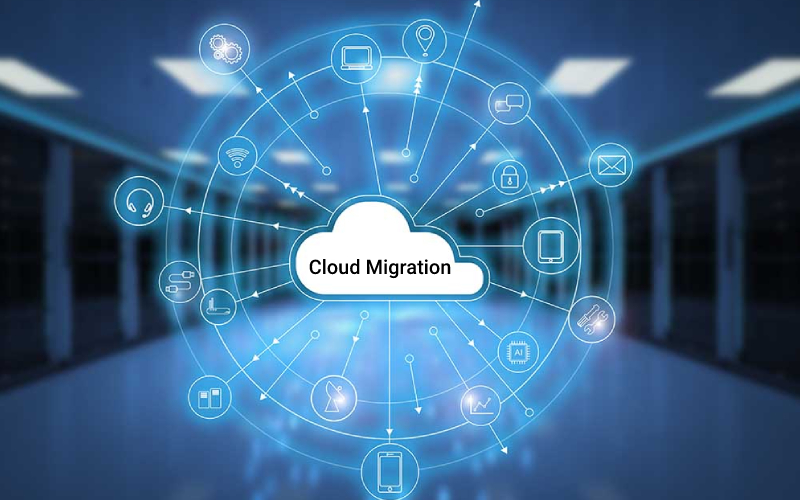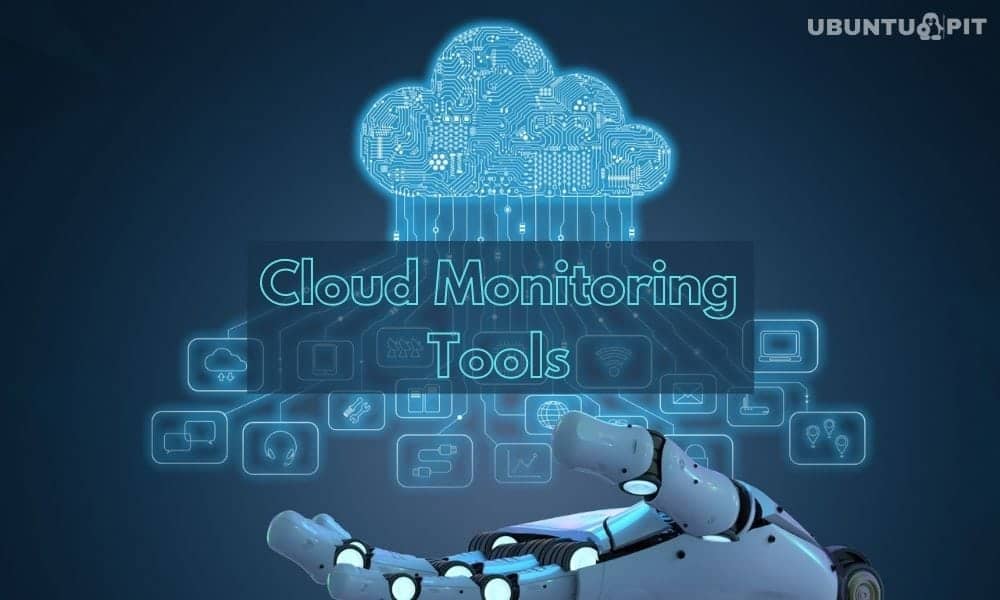Understanding the Cloud: Types and Benefits
Cloud computing has emerged as a powerful and versatile technology, enabling businesses to build robust, adaptable, and sustainable IT infrastructure. By utilizing cloud services, organizations can future-proof their IT systems and remain competitive in the rapidly evolving digital landscape. There are three main types of cloud services: Infrastructure as a Service (IaaS), Platform as a Service (PaaS), and Software as a Service (SaaS).
IaaS provides virtualized computing resources, such as servers, storage, and networking, over the internet. This service allows businesses to scale their IT infrastructure on demand, pay only for what they use, and avoid the capital expenses associated with purchasing and maintaining physical hardware. IaaS is an ideal solution for organizations that require flexible, scalable, and customizable IT resources.
PaaS offers a platform for developing, running, and managing applications without the complexity of building and maintaining the infrastructure typically associated with application development. PaaS allows developers to focus on creating innovative applications while the cloud provider handles the underlying infrastructure, making it an excellent choice for businesses that want to accelerate their software development lifecycle.
SaaS provides software applications over the internet, eliminating the need for businesses to install and run applications on their own computers or in their own data centers. This model enables organizations to access software from any device with an internet connection, reducing the total cost of ownership and increasing accessibility. SaaS is particularly beneficial for businesses that require rapid deployment of software solutions and minimal IT management.
The benefits of cloud computing extend beyond cost savings, scalability, and accessibility. By adopting cloud technologies, organizations can improve their disaster recovery capabilities, increase collaboration and productivity, and enhance data security. Moreover, cloud services enable businesses to leverage cutting-edge technologies, such as artificial intelligence, machine learning, and the Internet of Things (IoT), to drive innovation and growth.
Assessing Your Current IT Infrastructure
Future-proofing IT systems with cloud technologies requires careful planning and consideration. Before migrating to the cloud, it is crucial to evaluate your existing IT infrastructure to ensure a smooth and successful transition. This assessment involves identifying potential challenges and compatibility issues and determining the readiness of your organization for cloud adoption.
Begin by taking inventory of your current IT systems, including hardware, software, and data. This process will help you understand the complexity of your existing infrastructure and pinpoint areas that may require upgrades or replacements. Additionally, consider the scalability and flexibility of your current systems, as these factors will significantly impact your organization’s ability to adapt to changing business needs and technological advancements.
Next, assess the skill sets and expertise of your IT team. Cloud technologies often require new skills and knowledge, such as proficiency in cloud platforms, virtualization, and automation tools. Providing your team with adequate training and resources will ensure a successful migration and ongoing management of your cloud-based IT infrastructure.
It is also essential to consider the security measures currently in place within your organization. While cloud providers typically offer robust security features, it is crucial to understand your shared responsibility in maintaining data privacy and protection. Ensure that your organization’s security policies and procedures align with industry best practices and regulatory requirements before migrating to the cloud.
Lastly, evaluate your organization’s readiness for cloud adoption by considering factors such as budget, timeline, and corporate culture. A successful cloud migration often requires significant investment and resources, and it is essential to ensure that your organization is prepared for the financial and operational implications of such a transition. Additionally, fostering a culture that embraces change and innovation will help facilitate the adoption of cloud technologies and promote long-term success.
Selecting the Right Cloud Provider
When future-proofing IT systems with cloud technologies, choosing the right cloud provider is crucial to ensuring a secure, scalable, and efficient IT infrastructure. With numerous options available, it is essential to conduct thorough research and compare various providers based on several factors.
First and foremost, consider the security measures offered by the cloud provider. This includes encryption techniques, access controls, and data backup and recovery options. Ensure that the provider adheres to industry best practices and regulatory requirements to protect sensitive information and maintain data privacy. Additionally, evaluate the provider’s disaster recovery and business continuity plans to minimize downtime and disruptions in the event of a catastrophic event.
Next, review the provider’s service level agreements (SLAs) to ensure that they align with your organization’s needs and expectations. SLAs should outline the provider’s commitment to uptime, performance, and support services. Be sure to understand the provider’s escalation process for addressing issues and the compensation offered for missed SLAs.
Pricing models are another critical factor to consider when selecting a cloud provider. Ensure that the provider’s pricing aligns with your budget and that there are no hidden fees or unexpected charges. Additionally, consider the provider’s flexibility in scaling resources up or down as needed to accommodate changing business needs. This scalability is particularly important for organizations that experience seasonal fluctuations in demand or rapid growth.
Support services are also essential when choosing a cloud provider. Look for a provider that offers 24/7 support and has a track record of responsive and knowledgeable customer service. Additionally, consider the provider’s expertise in your industry and their experience working with similar organizations. A provider that understands your unique needs and challenges can offer more tailored solutions and support.
Lastly, consider the provider’s innovation and investment in new technologies. A provider that stays up-to-date with the latest trends and advancements in cloud computing can offer more cutting-edge solutions and features. This innovation is particularly important for organizations that want to maintain a competitive edge and stay ahead of the curve in their industry.

Designing a Robust IT Architecture with Cloud Technologies
Future-proofing IT systems with cloud technologies involves creating a secure, scalable, and efficient IT architecture that can adapt to changing business needs. To achieve this, organizations can leverage various cloud technologies, such as microservices, containers, and serverless computing.
Microservices architecture involves breaking down monolithic applications into smaller, independent components or services that can be developed, deployed, and scaled independently. This approach offers several benefits, including faster development cycles, improved fault isolation, and increased scalability. By deploying microservices in the cloud, organizations can take advantage of the cloud’s elasticity and pay-per-use pricing model to scale individual services up or down as needed.
Containers are another essential technology for building robust IT architecture in the cloud. Containers provide a lightweight, portable, and consistent runtime environment for applications, making it easier to deploy and manage applications across different cloud and on-premises environments. Containers also offer better resource utilization, faster startup times, and improved security compared to traditional virtual machines.
Serverless computing is a cloud computing model in which the cloud provider manages the infrastructure and dynamically allocates resources to run code in response to events or triggers. This model offers several benefits, including reduced operational overhead, lower costs, and improved scalability. Serverless computing is particularly useful for event-driven workloads, such as real-time data processing, IoT applications, and chatbots.
When designing a robust IT architecture with cloud technologies, it is essential to follow best practices, such as implementing a multi-layered security model, using automation and DevOps practices, and continuously monitoring and optimizing performance. A multi-layered security model involves implementing security measures at different levels, such as network, application, and data security, to provide a comprehensive defense against cyber threats. Automation and DevOps practices, such as infrastructure as code, continuous integration and delivery, and automated testing, can help organizations deploy applications and infrastructure faster and more reliably, reducing the risk of errors and vulnerabilities.
Continuous monitoring and optimization are also critical for ensuring a seamless user experience and maximizing the return on investment in cloud technologies. Tools and techniques, such as load balancing, capacity planning, and cost management, can help organizations optimize resource utilization, reduce latency, and minimize costs. By continuously monitoring and optimizing cloud performance, organizations can ensure that their IT systems are scalable, efficient, and resilient, enabling them to stay ahead of the competition and achieve their business objectives.

Implementing a Successful Cloud Migration Strategy
A successful cloud migration strategy is crucial for organizations seeking to future-proof their IT systems with cloud technologies. A well-planned migration strategy can help minimize downtime, reduce disruptions, and ensure a seamless transition to the cloud. Here are the essential steps involved in a cloud migration:
Planning: The first step in a cloud migration is to define the migration strategy and objectives. This involves identifying the applications and workloads to be migrated, assessing their readiness for the cloud, and determining the appropriate cloud deployment model (public, private, or hybrid). Organizations should also consider the potential challenges and compatibility issues that may arise during the migration process and develop a contingency plan to address them.
Preparation: Once the migration strategy is defined, the next step is to prepare the IT infrastructure for migration. This involves several tasks, such as cleaning up and optimizing the applications and data to be migrated, configuring the cloud environment, and setting up the necessary security measures. Organizations should also ensure that their staff has the necessary skills and knowledge to manage the cloud environment and applications.
Execution: The execution phase involves migrating the applications and data to the cloud and configuring them for optimal performance. This phase should be carried out in a structured and controlled manner, with clear communication and coordination between the different teams involved. Organizations should also monitor the migration process closely to ensure that it is proceeding as planned and address any issues or unexpected events promptly.
Post-migration monitoring: After the migration is complete, organizations should continue to monitor the cloud environment and applications closely to ensure that they are performing as expected. This involves tracking key performance indicators (KPIs), such as response time, availability, and resource utilization, and addressing any issues or bottlenecks promptly. Organizations should also review their migration strategy periodically and make adjustments as needed to ensure that their IT systems remain robust, adaptable, and sustainable.
In summary, implementing a successful cloud migration strategy requires careful planning, preparation, execution, and post-migration monitoring. By following best practices and using the right tools and techniques, organizations can ensure a seamless transition to the cloud and maximize the benefits of cloud technologies for their IT systems.

Ensuring Data Security and Compliance in the Cloud
As organizations migrate their IT systems to the cloud, data security and privacy become major concerns. With the shared responsibility model, cloud providers are responsible for securing the underlying infrastructure, while customers are responsible for securing their applications and data. Here are some best practices for ensuring data security and compliance in the cloud:
Shared responsibility model: Understand the shared responsibility model and ensure that your organization is following best practices for securing your applications and data. This includes implementing strong access controls, encrypting data at rest and in transit, and regularly monitoring and auditing your cloud environment.
Encryption techniques: Use encryption techniques to protect sensitive data in the cloud. This includes using encryption keys to secure data at rest and in transit, as well as implementing encryption gateways to secure data as it moves between different cloud environments.
Compliance requirements: Ensure that your organization is meeting all relevant compliance requirements for your industry and region. This includes regulations such as HIPAA, GDPR, and PCI-DSS. Cloud providers often offer compliance reports and certifications to help customers meet these requirements.
Data backup and disaster recovery: Implement a robust data backup and disaster recovery plan to ensure that your organization can quickly recover from any data loss or system downtime. This includes regularly backing up data to a secure offsite location and testing your disaster recovery plan to ensure that it is effective.
Security policies and procedures: Develop and implement comprehensive security policies and procedures for your cloud environment. This includes policies for access control, data encryption, and incident response. Regularly review and update these policies to ensure that they are effective and up-to-date.
In summary, ensuring data security and compliance in the cloud requires a shared responsibility between cloud providers and customers. By following best practices for encryption, compliance, data backup, and security policies, organizations can protect sensitive information and maintain regulatory compliance in the cloud. As cloud technologies continue to evolve, it is essential to stay up-to-date with the latest security measures and best practices to ensure the long-term sustainability and competitiveness of IT systems.

Monitoring and Optimizing Cloud Performance
As organizations migrate their IT systems to the cloud, it is essential to continuously monitor and optimize cloud performance to ensure a seamless user experience and maximize return on investment. Here are some best practices for monitoring and optimizing cloud performance:
Load balancing: Implement load balancing techniques to distribute traffic evenly across multiple servers and ensure that no single server becomes overwhelmed. This helps to prevent downtime and improve application performance.
Capacity planning: Regularly monitor cloud usage and performance metrics to ensure that your organization has sufficient capacity to meet demand. This includes tracking metrics such as CPU utilization, memory usage, and network traffic to identify trends and forecast future capacity needs.
Cost management: Continuously monitor and optimize cloud costs to ensure that your organization is not overspending. This includes tracking usage patterns, identifying underutilized resources, and implementing cost-saving measures such as reserved instances and spot instances.
Performance optimization: Implement performance optimization techniques to improve application speed and responsiveness. This includes techniques such as caching, code optimization, and database optimization.
Monitoring tools: Use monitoring tools to track cloud performance and identify issues before they become critical. This includes tools such as cloud monitoring services, log analysis tools, and performance testing tools.
In summary, continuous monitoring and performance optimization are critical components of a successful cloud strategy. By implementing load balancing, capacity planning, cost management, performance optimization, and monitoring tools, organizations can ensure a seamless user experience and maximize return on investment. As cloud technologies continue to evolve, it is essential to stay up-to-date with the latest monitoring and optimization techniques to ensure the long-term sustainability and competitiveness of IT systems.
Future-proofing IT systems with cloud technologies requires a comprehensive approach that includes understanding the different types of cloud services, evaluating existing IT systems, selecting the right cloud provider, designing a robust IT architecture, implementing a successful cloud migration strategy, ensuring data security and compliance, and continuously monitoring and optimizing cloud performance. By following best practices in each of these areas, organizations can build robust, adaptable, and sustainable IT infrastructure that meets their current and future business needs.

Embracing a Culture of Continuous Learning and Improvement
As organizations continue to adopt cloud technologies to future-proof their IT systems, it is essential to foster a culture of continuous learning and improvement within the organization. With the rapid pace of technological change, staying up-to-date with the latest cloud technologies and best practices is crucial to ensuring the long-term sustainability and competitiveness of IT systems.
Continuous learning and improvement involve encouraging employees to expand their knowledge and skills in cloud technologies. This can be achieved through various means, such as training programs, workshops, and conferences. Providing opportunities for employees to learn and grow not only benefits the individual but also the organization as a whole, as it helps to build a skilled and knowledgeable workforce that can adapt to changing technologies and business needs.
In addition to formal training programs, organizations can also promote continuous learning and improvement by creating a culture that values experimentation and innovation. Encouraging employees to try new things and take calculated risks can lead to the discovery of new and better ways of doing things. This can help to drive innovation and improve the overall efficiency and effectiveness of IT systems.
Moreover, continuous learning and improvement require a commitment to staying up-to-date with the latest trends and best practices in cloud technologies. This involves monitoring industry news and developments, attending conferences and events, and participating in online communities and forums. By staying informed and engaged, organizations can ensure that they are using the latest and most effective cloud technologies and best practices, which can help to future-proof their IT systems and maintain a competitive edge.
In conclusion, embracing a culture of continuous learning and improvement is essential for organizations that want to future-proof their IT systems with cloud technologies. By providing opportunities for employees to learn and grow, promoting experimentation and innovation, and staying up-to-date with the latest trends and best practices, organizations can build a skilled and knowledgeable workforce that can adapt to changing technologies and business needs. This can help to ensure the long-term sustainability and competitiveness of IT systems and enable organizations to thrive in the rapidly evolving digital landscape.
Future-proofing IT systems with cloud technologies requires a comprehensive approach that includes understanding the different types of cloud services, evaluating existing IT systems, selecting the right cloud provider, designing a robust IT architecture, implementing a successful cloud migration strategy, ensuring data security and compliance, continuously monitoring and optimizing cloud performance, and fostering a culture of continuous learning and improvement. By following best practices in each of these areas, organizations can build robust, adaptable, and sustainable IT infrastructure that meets their current and future business needs.

